The new, Pharaonic Capital of Egypt.
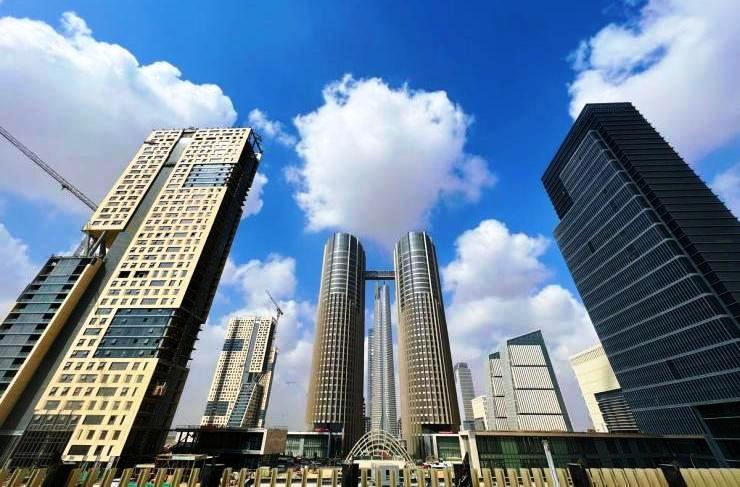
The Cairo metropolis, one of the most populous in the world, is collapsing. So, President al-Sisi has ordered the construction of a new capital, as yet unnamed. The lavish $50+ billion project. But the rising skyscrapers and monuments are already casting sinister shadows.
Along the ultra-modern twelve-lane highway from Cairo across the desert to Suez, the skeleton of a very tall skyscraper takes shape like a mirage; as one scans the horizon more closely, however, palaces, imposing buildings, domes, pylons, and viaducts slowly appear.
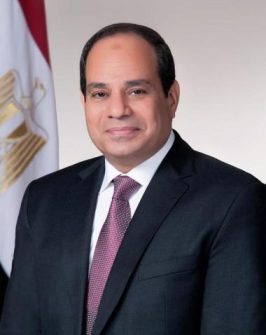
Egyptian President Abdel Fattah El-Sisi. CC BY 4.0/Min. of Communications and Information Technology.
This is not an illusion the heat creates. What, until less than ten years ago, was just an immense expanse of sand is now an endless, feverish construction site that, according to the dreams of Egyptian leader Abdel Fattah al-Sisi, will shape the new capital. Cairo is one of the most populous cities in the world, with over twenty million inhabitants living in a metropolitan area spread over the Nile’s two banks. A city that seems on the verge of collapsing at any moment under its own weight, suffocated by pollution, with insufficient infrastructure and often unstable and inadequate services.Hence, the idea is to abandon the millenary capital to its fate and to create a brand new one 50 kilometres farther east, with a monumental centre spreading over 700 square kilometres and capable of housing ministries and government offices as well as, in the most optimistic forecasts, seven million inhabitants.
A history that goes back a long way
The new capital, which does not yet have an official name, is just the latest in a series of projects, that started in the 1970s during Sadat’s era, to decongest the Cairo metropolis. Thus, in recent decades, numerous satellite cities have sprung up, either prepared to accommodate hundreds of thousands of inhabitants or planned as industrial development areas, such as the ‘City of the Tenth Ramadan’, the ‘City of 6 October’ and the more recent ‘New Cairo’, an exclusive city desired by Mubarak in the early 2000s.It was Mubarak, himself, who first outlined the idea of a new capital, an intuition that the current leader al-Sisi has resurrected not only as a strategic project but even as a symbol of a new efficient, modern and attractive Egypt.
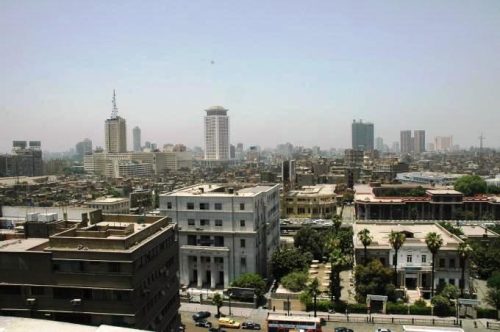
The capital of Egypt, Cairo home to 20 million people. File swm
The city plan therefore mixes avant-garde architecture, references to the classical age and a symbolism referring to the pharaohs’ glorious past: triumphal arches, colonnades, minarets and immense tree-lined squares drawing typically Egyptian symbolism to frame the impressive monumental buildings clad in light marble.
Finally, the beating heart of the new capital will be the so-called Central Business District, a small Manhattan crowded with skyscrapers topped by the New Iconic Tower, a 390-metre cylindrical glass and steel tower that will be the tallest on the African continent.
For his new city, probably the largest ever built from scratch, al-Sisi has spared no expense: in 2015, the year in which work began, the planned sum was USD 45 billion, a figure that is set to rise considerably, to over USD 50 billion, and which was made available mainly through funding from Beijing, the country’s main partner.
Sustainable project?
The rhetoric, when new cities are built, is always the same: the concepts of sustainability, smart cities and green technologies pervade every discourse; the images full of trees, water features, reflective glass, and elegant people offer a perception of modernity, serenity, and widespread well-being.From the official website of ACUD, the state-owned company managing the project, 51% is controlled by the army; however, a distressing and far from reassuring idea of a smart city transpires, with an operation centre capable of monitoring, with sensors, drones and thousands of cameras, the new city’s every aspect, from energy production to traffic and air quality, but not only. Modern artificial intelligence and recognition systems, for example, will be used to signal the presence of suspicious persons, the access of unauthorised individuals, or the occurrence of gatherings.
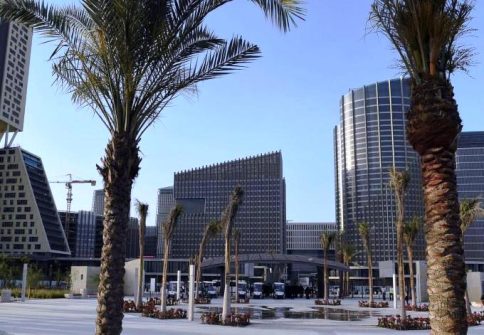
New Administrative Capital. CC BY-SA 4.0/Abdelrhman 1990
Equally unconvincing is the tale of a green and sustainable city, reiterated by the Egyptian authorities even at the Cop-27 in Sharm el-Sheikh. It is true that a large part of future energy needs will be covered by photovoltaic systems and that the current Cairo is one of the most polluted cities in the world, but the impact the new metropolis’ construction has on the environment is incalculable, starting with the endless land consumption and passing through of the resources and energy use.As if that were not enough, the new capital, like many from-nothing founded cities, seems to be designed to have cars at the core: huge six- or eight-lane motorways surround the neighbourhoods and connect the nerve centres, while the plan is to build thousands of kilometres of new roads.
The shadow of the crisis
The president’s confident face stands out on dozens of blow-ups covering the construction sites accompanied by resounding slogans. ‘A new capital for all Egyptians’, reads one of them, but you have only to look around and realise that this is unlikely to be the case. Very few will be able to afford to buy the new and exclusive flats that are now being offered for just under a hundred thousand dollars in a country where an elementary school teacher earns about a hundred euros a month.
Certainly, the presence of ministries, government offices, and the headquarters of private companies will force many employees and officials to move to the new residential areas, but only a minority of them will be able to afford to enter such houses; the others will either lose their jobs or be forced to make very long and expensive daily commutes from Cairo.
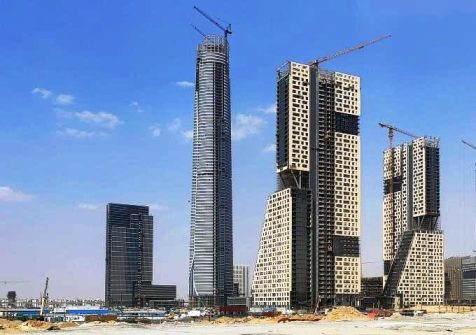
Iconic Towers. CC BY-SA 4.0/ Mohamed Ouda
Another sensitive issue is that of time. Moving offices, services and staff is a delicate and time-consuming operation, which means that for a long-time, residential areas will at risk of remaining half-empty, making them less attractive and jeopardising the survival of businesses and services.Time is a factor far from negligible, also politically: in 2024 there will be presidential elections in which al-Sisi, thanks to a providential amendment to the constitution, will be able to run for a third term. Despite tight control over the opposition and dissidents, discontent over the economic crisis is growing and risks becoming explosive.It is no coincidence that work continues feverishly and the construction sites are swarming with people. The inauguration should anticipate the electoral appointment and make people forget the controversy. Indeed, with the galloping cost of living and a public debt that has quadrupled in the last 15 years, the new city could turn from being the pride of Cairo’s strongman into a failure that could compromise his stay in power.
The hidden face of the smart city
A group of young men sitting under the concrete pylons of the new monorail waits for a possible day job, others behind them stagger along carrying heavy buckets full of cement on their shoulders. Not far away, a middle-aged worker prays on a worn-out mat lying next to a Caterpillar after finishing his daily duty.
It is the backstage of the smart city, the part usually unseen but lying behind every great work in human history: old people with their faces hollowed out by wrinkles and fatigue, or very young people, little more than children, who, covered in dust, toil away at the humblest jobs, carrying bricks, mixing cement or shovelling sand.
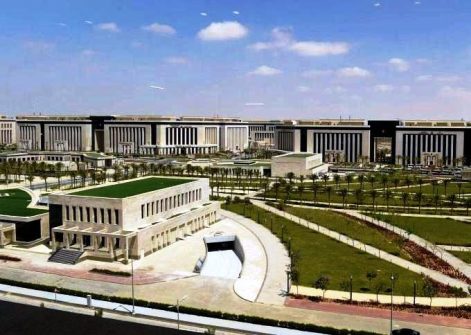
Central business district 2, New Administrative Capital. CC BY-SA 4.0/Abdelrhman 1990
The roadsides, the vertiginous scaffolding, and the construction sites of the large squares, are swarming with thousands of people from Cairo’s slums or from rural areas as migrants; others come from farther afield, from South Sudan or Ethiopia.
They live hidden inside compounds in the desert or in miserable shacks; no one sees them and yet it is thanks to their hands and sometimes their blood that the magnificent new capital takes shape. A story that repeats itself, from the pyramids’ time to the present day.
Their half-voiced phrases, but above all their disenchanted glances, make it clear that despite the regime’s rhetoric, they are well aware that the elegant palaces and scenic squares taking shape amidst the sand will never be attainable for them.
Nothing new under the sun
The course of events seems to repeat itself cyclically in this corner of Africa with a history stretching back thousands of years; Cairo, itself, was built from nothing to become a new capital. In the year 969, after conquering Egypt on behalf of the Fatimid empire, the Sicilian-born Arab general Jawhar al-Siqilli decided to found a new city just north of the then capital Fustat.
A little over a thousand years later, history rewound. Fustat was slowly absorbed by the new city, becoming a neighbourhood but also a dumping ground. Will present-day Cairo have the same fate? Hard to think so, but Egypt’s history, as we know, is thousands of years old and is studded with enigmatic, immense, exaggerated projects. Pharaonic, in fact. (Open Photo: Central business district (CPD) in the New administrative capital of Egypt. CC BY-SA 4.0/Mahan84848)
Federico Monica/Africa



